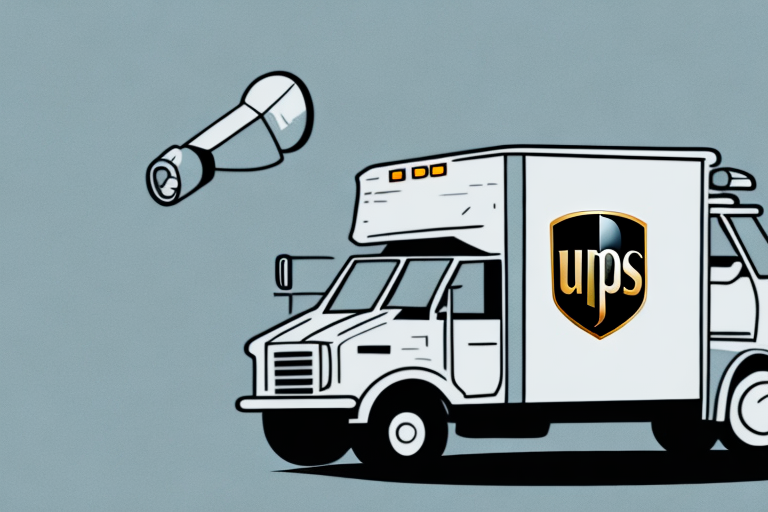Introduction to UPS Insurance Coverage
As a frequent shipper, it's essential to understand the insurance options available to protect your valuable packages. UPS Insurance is one of the most trusted solutions offered by a leading delivery carrier. This comprehensive guide will delve into the nuances of UPS insurance, including the types of coverage, maximum limits, factors influencing coverage, the claims process, and tips to maximize your protection.
Types of UPS Insurance Coverage
Declared Value Coverage
Declared Value Coverage is automatically included with all UPS shipments, providing protection up to $100. If your package exceeds this amount, you can declare a higher value for an additional fee. This option ensures that the carrier covers the actual value of the items being shipped.
Additional Value Coverage
For packages valued over $100, Additional Value Coverage can be purchased. This separate insurance option allows you to insure your package for up to $50,000. It's an ideal choice for high-value items such as electronics, artwork, and important documents.
Maximum Coverage Limits
The maximum coverage provided by UPS Insurance varies based on the type of coverage selected:
- Declared Value Coverage: Up to $50,000 per package.
- Additional Value Coverage: Up to $150,000 per package through UPS Capital Insurance Agency.
It's important to note that these limits apply to the item's value only and do not include shipping or handling fees. Always verify the maximum coverage applicable to your shipment here.
Factors Affecting UPS Insurance Coverage
Declared Value of Package
The declared value is the amount you specify as the worth of your package's contents. Accurately declaring this value ensures adequate coverage in case of loss or damage. Under-declaring can result in insufficient compensation.
Destination Restrictions
Coverage limits may vary based on the destination of your shipment. Some international destinations might have specific restrictions or require additional fees for higher coverage amounts. Always check with UPS to confirm the coverage limits for your shipment's destination.
Type of Items Shipped
Certain items like cash, jewelry, and antiques are either excluded or have limited coverage under UPS Insurance. It's crucial to review UPS's excluded items list before shipping to ensure your items are eligible for coverage.
UPS Insurance Claims Process
Filing a Claim
If your package is lost, stolen, or damaged during transit, you can file a claim with UPS within specific time frames:
- Domestic Shipments: Within nine months of the delivery date.
- International Shipments: Within 60 days of the delivery date.
Claims can be submitted online through the UPS Claims Center or by contacting UPS customer service.
Documentation Required
To process your claim efficiently, ensure you have the following documentation ready:
- Proof of the package’s declared value (e.g., sales receipt or invoice).
- Evidence of any damage (e.g., photographs).
- Tracking number and shipping labels.
- Original packaging and contents if requested.
Providing complete and accurate information can expedite the claims process and increase the likelihood of a successful resolution.
Tips to Maximize Your UPS Insurance Coverage
- Declare the Full Value: Always declare the accurate value of your package to ensure full coverage.
- Choose the Right Shipping Method: Select a shipping option that aligns with the value and fragility of your items. For high-value items, consider expedited services that offer higher coverage limits.
- Proper Packaging: Use high-quality packaging materials to prevent damage during transit. UPS insurance typically doesn’t cover damage resulting from improper packaging.
- Review Terms and Conditions: Familiarize yourself with UPS’s insurance policies, including exclusions and limitations, to avoid unexpected issues.
Comparing UPS Insurance with Other Shipping Carriers
When selecting insurance for your shipments, it's beneficial to compare UPS’s offerings with those of other major carriers:
- FedEx: Offers similar insurance options with declared value coverage and additional value coverage. FedEx allows declarations up to $50,000, comparable to UPS.
- USPS: Provides limited insurance coverage, with free insurance available for certain services like Priority Mail and Priority Mail Express. For higher-value items, additional insurance must be purchased.
Each carrier has its unique policies and coverage limits, so evaluating your specific needs against each provider's offerings is crucial. For a comprehensive comparison, visit the official websites of each carrier:
Is UPS Insurance Worth the Investment?
The value of UPS Insurance depends on the contents and importance of your shipment. For valuable items such as electronics, jewelry, and important documents, investing in additional insurance can provide peace of mind and financial protection against potential loss or damage. Conversely, for low-value items, standard coverage may suffice, and additional insurance might not be necessary.
Assess the value of your shipment and the potential risks involved to determine if UPS Insurance aligns with your protection needs.
Real-Life Examples of Successful UPS Insurance Claims
Numerous individuals and businesses have benefited from UPS Insurance through successful claims:
- Jewelry Restoration: A customer in New York filed a claim after a valuable jewelry package was damaged during transit. With declared value coverage, UPS compensated the full value, allowing for timely restoration.
- Electronic Equipment Replacement: A small business owner in California shipped high-end electronics to a client. The package was lost in transit, and UPS Insurance facilitated a swift reimbursement, ensuring the business maintained its reputation.
These examples highlight the importance of understanding and utilizing UPS Insurance to safeguard your valuable shipments.
For more detailed information on UPS Insurance and to explore additional resources, visit the official UPS Insurance page.






















